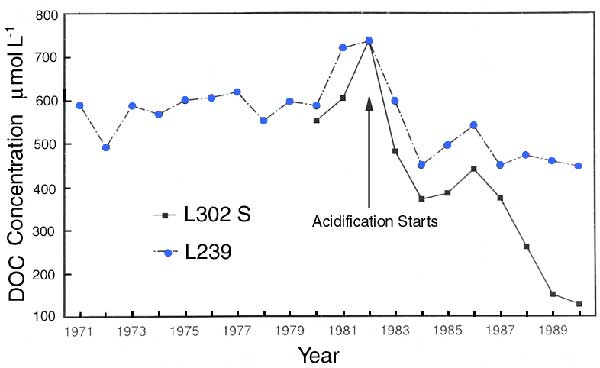 Alberta's WaterIntroductionPublications Climate Change Industrial Impacts Agricultural Impacts Urban Impacts Biodiversity Loss Definitions Links Site Map |
 |

A Few Impacts of Climate Change
|
 |
| The brown-yellow colour of this lake is due to dissolved organic carbon, or DOC. Photo courtesty Dr. Bill Donahue |
The photo to the right shows water in a lake with high levels of DOC. The DOC, which consists of partially decomposed organic matter, is what gives many northern lakes their characteristic yellow-brown colour. The concentration and the chemical state of DOC, whether fresh or degraded, are the most important factors that determine how deep sunlight penetrates into a given lake. In effect, DOC therefore acts as the primary sunscreen against UV radiation in the shallows of many lakes.
Both climate change and acidification act to lower DOC concentrations. The graph below compares Lake 302S, which was experimentally acidified beginning in 1982, and Lake 239, which was monitored as a reference basin and was affected only by climate warming and drought. Both show declines in DOC, but the decline is more severe in the acidified Lake 302S. The decline is also more rapid in Lake 302S from 1988 onward, when the pH, or acidity, of the lake was decreased. During experimental acidification, UV exposure in the shallows of Lake 302S increased by more than 1000%, due to acid-induced decreases in the amount of DOC and increases in its transparency.



